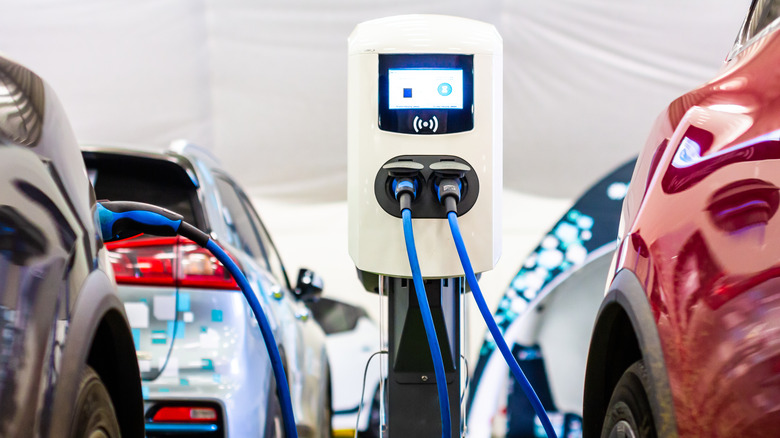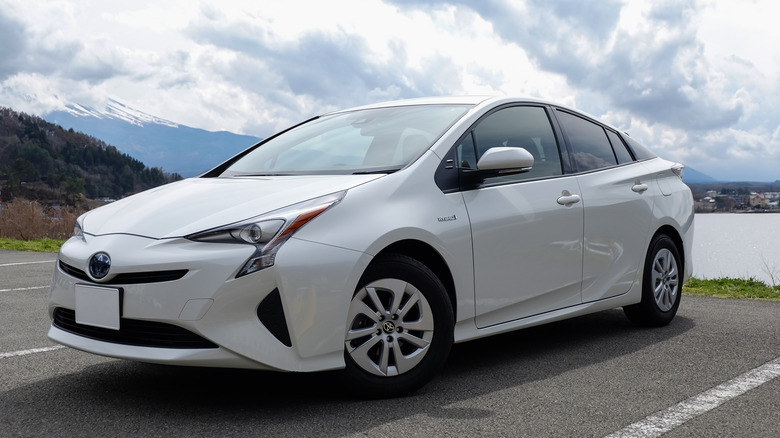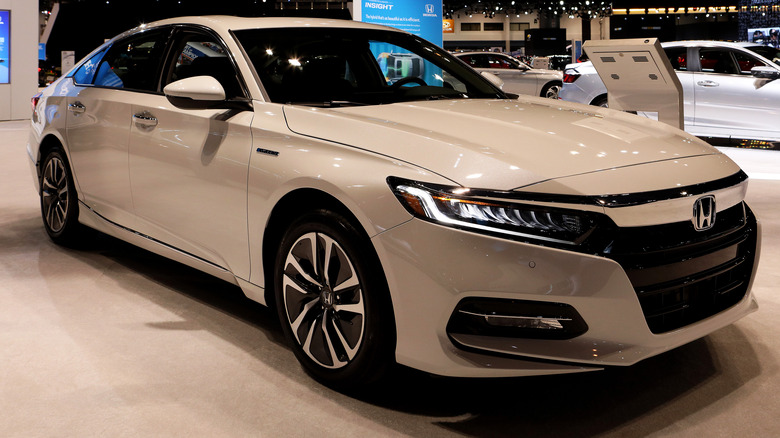What's The Difference Between Hybrids And Plug-In Hybrids?
The Honda Insight and Toyota Prius are renowned for being the world's first mass-produced hybrid electric vehicles, while the Chevy Volt was the first commercially available plug-in hybrid car in the USA (according to the Department of Energy). These cars are popular, and their popularity is growing. According to Car and Driver, hybrids and Plug-in-hybrid-electric vehicles (PHEVs) are in the "middle ground" of new-age electrified vehicles and are ideal for consumers who aren't yet ready to take the full electric plunge. Today we're going to take a look at what makes a car classifiable as a hybrid or a plug-in hybrid.
According to Forbes, the technology behind hybrid vehicles is among the least understood environmentally-friendly tech in a vehicle today. We find this interesting since PHEVs have been around for more than a decade, while hybrids have existed since the early 2000s. In addition, PHEV sales nearly doubled from 308,000 to 608,000 in 2021, representing a 138% increase from 2020. If you are thinking of upgrading to a hybrid or plug-in hybrid vehicle, it's crucial to discern what makes a hybrid a hybrid, and what the differences are between a standard hybrid and a PHEV.
The difference between the two
According to the U.S. Department of Energy, hybrid-electric cars (or simply hybrids) draw motivation from a combination of a gas or diesel internal combustion engine and an electric motor. The motor draws energy from a battery pack, but you can't recharge the battery by plugging in. Instead, the gasoline engine and regenerative braking replenish the battery. Additionally, the electric motor adds power when accelerating or propelling the car, and the battery can power auxiliary loads and minimize engine idling when not moving. This combination yields superior fuel economy than a standard gas-only car, but hybrids have a short all-electric range if any.
On the flip side, a plug-in hybrid (PHEV) also has a gasoline engine and an electric motor (or motors) to power the car. However, PHEVs typically have more prominent, higher-capacity battery packs, and those batteries are rechargeable using a wall outlet or charging equipment. And since PHEVs have bigger batteries (and, in most cases, a more potent electric motor or motors), they typically run on all-electric power (EV mode) until the battery is nearly empty. And when the batteries run dry, the internal combustion engine comes alive to propel the car.
What are the pros and cons of hybrid cars?
The biggest draws to owning a hybrid car are the fuel economy and fewer emissions. For instance, the 2022 Toyota Avalon Hybrid achieves 44 mpg and is one of the most fuel-efficient hybrid cars for sale today, said U.S. News. Meanwhile, the Honda Accord Hybrid is also on the list and registers 47 mpg. Compared to a non-hybrid Avalon (26 mpg) and Accord (up to 33 mpg), you pay less for fuel if you choose the hybrid.
The fuel economy numbers are certainly enticing, but hybrid cars have drawbacks, too. The complex gasoline-electric powertrain could cost tons of money to repair or maintain when something goes wrong. In addition, hybrids can be as much as 20% more expensive than a conventional gas-only car, according to Edmunds. Another drawback worth mentioning is the added weight of the hybrid powertrain, leading to what has been reviewed as uninspired handling and a dull steering feel.
What are the pros and cons of plug-in hybrids (PHEVs)?
The most obvious deciding positive factor in choosing a PHEV is the extended all-electric driving range. Equipped with larger batteries, PHEVs can drive on pure electric power without burning a drop of fuel. The Toyota RAV4 Hybrid achieves a combined 40 mpg, but the RAV4 Prime PHEV achieves a lower 38 mpg. But if you factor in the RAV4 Prime's 42 miles of all-electric range, its real-world fuel economy would be 94 MPGe, according to the U.S. EPA.
Suppose your daily travel takes you less than 42 miles. In that case, you can drive the RAV4 Prime every single day without consuming fuel — provided you top up the batteries before every journey, of course. Furthermore, Forbes adds the RAV4 Prime would only drink a gallon of gasoline to go 80 miles and two gallons for 118 miles, which is excellent for a roomy family crossover.
The drawbacks of a PHEV are similar to a hybrid. The bigger battery and more potent electric motors are an added cost, and they also add weight. It will help if you remember to recharge the batteries more often to take advantage of a PHEVs sterling all-electric driving range. If you don't, a PHEV will continue operating in hybrid mode as long as the tank has good ol' petrol, according to Car and Driver, which means you're still saving fuel.
Not all PHEVs are the same
It's easy to associate PHEVs with having extended all-electric driving ranges than a hybrid car, but it's not always the case. The Porsche Cayenne Turbo S E-Hybrid PHEV only achieves 14 miles of all-electric range, and the Subaru Crosstrek Hybrid is no better at 20 miles, according to Cars.com. Meanwhile, the Toyota RAV4 Prime, Hyundai Ioniq PHEV, and Chrysler Pacifica Hybrid have the most extended all-electric driving range of any PHEV.
Despite the rising popularity of all-new electric vehicles from the world's top automakers, not everyone thinks going all-electric is the right choice to save our planet. But for those who wish to make a difference, hybrids and plug-in hybrid vehicles are great stepping stones in reducing carbon emissions.




